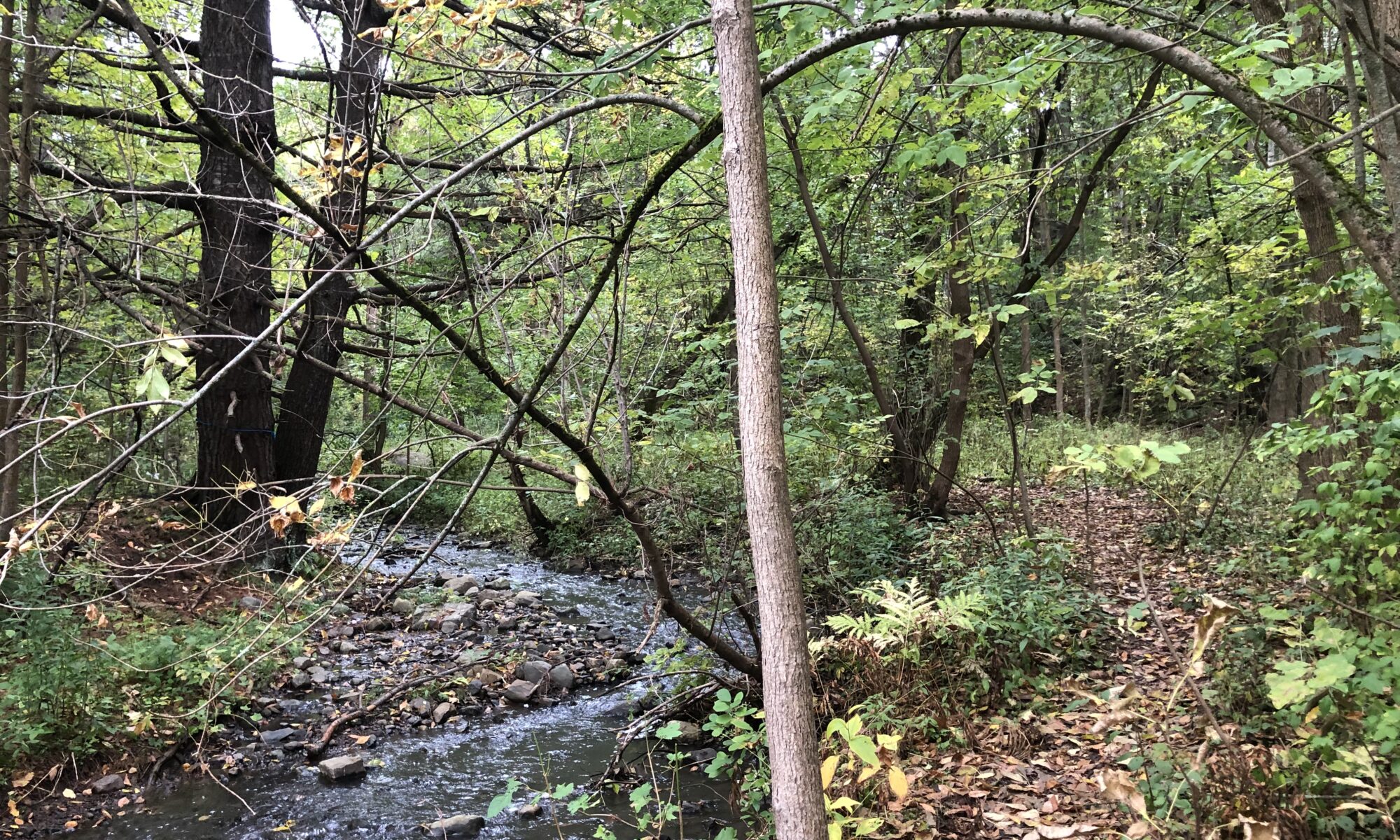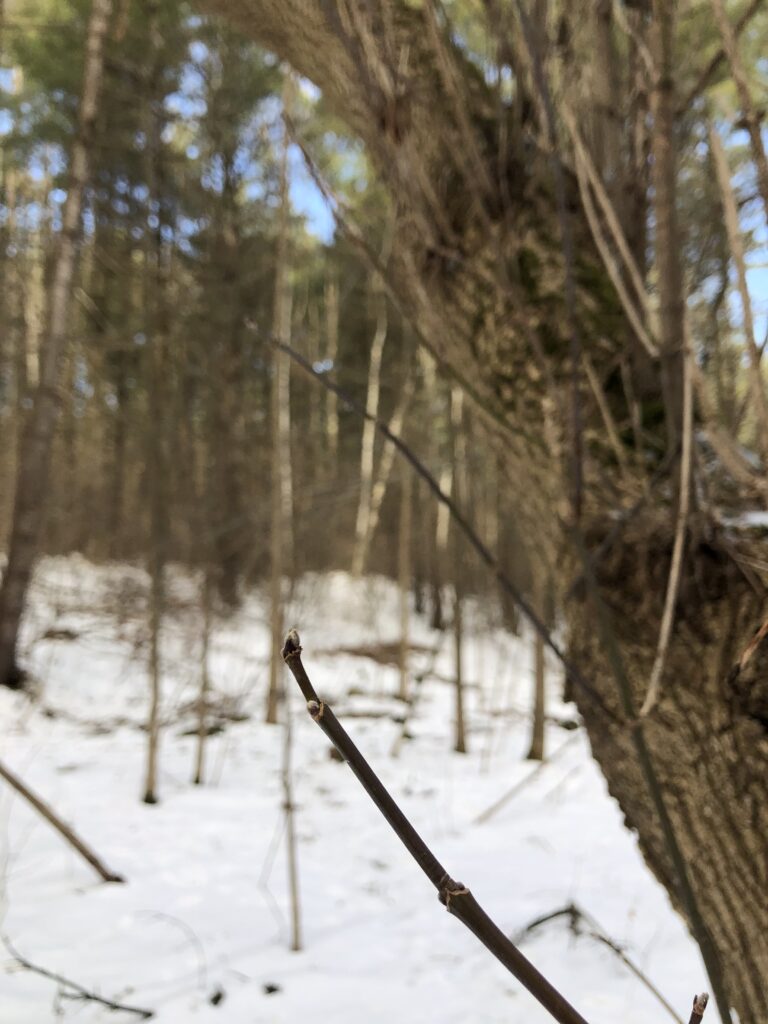
Welcome back to my Phenology Blog! It is now the end of January, which means that the inhabitants of my place are trying their best to endure the bleak cold of winter in hopes of spring. Since my last visit, my site has not changed in many obvious ways, but there are some slight differences. The snow is much harder and icier due to the recent freezing after a week of thawing. The flow of the creek is slower than it was in December, as more of the water has turned to ice, especially by the banks, as you can see above. There are nearly no leaves left on any of the deciduous trees, while in my last visit some of the Norway maples were still hanging on to the last of their leaves.

As for signs of wildlife, there were many animal tracks visible near the trail next to the creek. First, I saw what appeared to be deer tracks (pictured above), which I identified based on the hoof-shaped indent, length of the stride, and diagonal walking gait (Levine, 2014). However, the most interesting part of my visit was a trail of frozen blood surrounding various different tracks and deer scat, pictured below.

The area surrounding the scat and blood was trampled, making it hard to identify individual tracks. This implies perhaps multiple animals or the injured deer stopping to rest. However, the scat makes it clear that a deer was involved, and was most likely the injured animal.
As for trees, I was able to identify a few deciduous species, namely, boxelder, Norway maple, and sugar maple based on the Winter Twig Identification Guide (Watts, 1943). A boxelder twig is pictured above and to the left, which I identified based on its whitish downy buds, opposite branching, and dark stem. I have also seen boxelders throughout my site since the beginning of this blog, so the identification makes sense with my place. To the right, I took a photo of a twig that I have identified as a sycamore because the leaf scar encircles each bud of the twig. Below I have included a sketch of a boxelder twig along with my field notes from my recent visit. I am looking forward to seeing my place start to show signs of spring as the months go by!
Works Cited
Watts, May Theilgard. (1943). Winter Twigs.
Levine, Lynn. (2014). Mammal Tracks and Scat Life-Size Pocket Guide.




